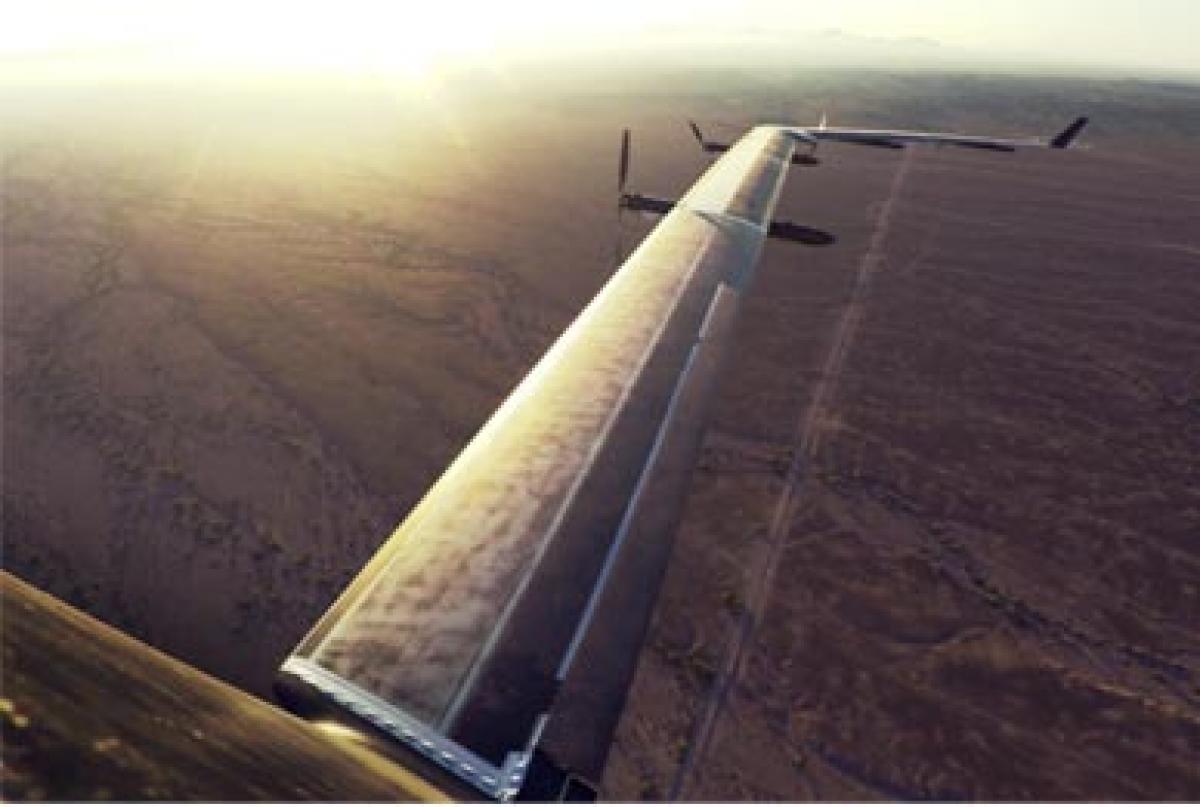Live
- TTD closes Akasaganga, Papavinasam roads
- High costs, limited results: Drone mist-spraying pilot project faces setback
- Poster war on as parties compete for voter attention
- Many dams, tanks filled as rains batter Tirupati dist
- Mayawati, Akhilesh condemn damage to Constitution replica
- Mann slams Centre over ‘one nation, one election’
- Techie suicide case: Mother-in-law flees Jaunpur home
- State government to Supreme Court: New guidelines on how to apply anti-gangster law in UP
- CM Chandrababu to unveil Vision 2047 document today in Vijayawada, traffic restrictions imposed
- State-level LIMES-2k24 inaugurated
Just In
Facebook takes a step forward with its Net-connectivity plane


Flying for as long as three months, the energy-efficient aircraft is built to use only 5,000 watts — the same amount as three hair dryers, or a high-end microwave – when at cruising speed.
Facebook is one step closer to bringing Internet connectivity to remote, underserved areas of the world.The company’s Connectivity Lab completed the first full test of Aquila, a high-altitude, solar-powered, unmanned aircraft that would beam Internet connectivity down to Earth using laser technology. The aircraft would circle an area up to 60 miles in diameter while flying at 60,000 feet.
Flying for as long as three months, the energy-efficient aircraft is built to use only 5,000 watts — the same amount as three hair dryers, or a high-end microwave – when at cruising speed.
We’ve been flying a one-fifth scale version of Aquila for several months, but this was the first time we’ve flown the full-scale aircraft,” wrote Jay Parikh, Global Head of Engineering and Infrastructure at Facebook, in a blog post. “To prove out the full capacity of the design, we will push Aquila to the limits in a lengthy series of tests in the coming months and years.”
facebook aquila solar plane wingFacebook The view from a wing of Facebook's Aquila solar-powered plane.Facebook has been working for several years on new technologies that would bring Internet connectivity to remote, often poor, underserved areas of the world.About 4 billion people around the globe – or 60% of humanity -- lack access to an Internet connection, according to Facebook.
Facebook, working with Ericsson, Nokia, Opera, Qualcomm and Samsung, helped to found Internet.org, a global connectivity project with the goal of bringing access to the Internet to remote and underserved areas of the world.
Google, a major Facebook rival, is working on the same problem, pushing its Project Loon, which would use high-altitude balloons to distribute connectivity.The first full-scale test of Aquila was a low-altitude flight that lasted for more than 90 minutes, three times longer than the original plan.
We were able to verify several performance models and components, including aerodynamics, batteries, control systems, and crew training,” wrote Parikh. “In our next tests, we will fly Aquila faster, higher and longer, eventually taking it above 60,000 feet. Each test will help us learn and move faster toward our goal.”
According to Parikh, the world record for solar-powered, unmanned flight stands at two weeks. To reach its goal of flying the aircraft for three months means there is a lot of work to do.
We’re encouraged by this first successful flight, but we have a lot of work ahead of us,” Parikh wrote. “This will require significant advancements in science and engineering to achieve.
It will also require us to work closely with operators, governments and other partners to deploy these aircraft in the regions where they’ll be most effective.”facebook aquila infographic Facebook.
Read More
Soure:Techgig.com

© 2024 Hyderabad Media House Limited/The Hans India. All rights reserved. Powered by hocalwire.com






